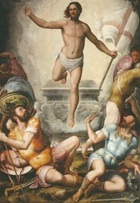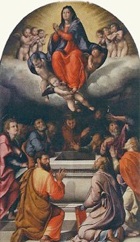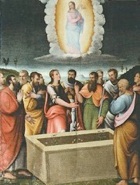Orazio Alfani was the son of another Perugian artist, Domenico Alfani, under whom he trained. He is documented in Sicily in 1539-44. He was one of the founders of the Accademia di Belle Arti of Perugia in 1573.
Perugia
Mystical Marriage of St Catherine (ca. 1549)
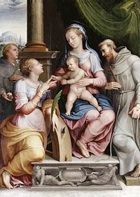
The altarpiece depicts the Madonna and Child enthroned, with St Catherine receiving a wedding ring from the baby Jesus. SS Francis and Antony of Padua stand to the sides.
Panels from the Chiesa del Gesù (ca. 1550)
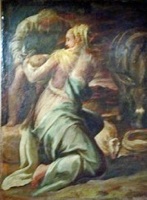
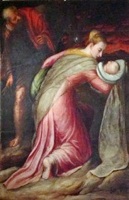
These two panels, which are attributed to Orazio Alfani, were recorded in the 18th century on the counter-façade of from the Chiesa del Gesù. They depict:
-
✴the Holy Family and
-
✴the Rest on the Flight to Egypt.
Cards attached to them recorded that they formed part of the Anastagi bequest. They entered the Galleria Nazionale in 1863.
Madonna degli Alessandri (1551)
The inscription records that Felice de’ Alessandri commissioned this altarpiece in 1551. It was documented in the church of San Valentino in the 18th century and moved to what became SS Stefano e Valentino when San Valentino was suppressed in 1819. It was subsequently sold to the Accademia di Belle Arti and is now in the Galleria Nazionale.
The altarpiece, which is attributed to Orazio Alfani, depicts the Madonna and Child enthroned with SS Andrew and Antony of Padua.
Detached frescoes (ca. 1551)
These five frescoes, which came from two niches in San Valentino, were detached at an unknown time and transferred to canvas. They are now in the Galleria Nazionale, and might well have arrived there via SS Stefano e Valentino , like the Madonna degli Alessandri (above). These frescoes, which are also attributed to Orazio Alfani, depict:
-
✴St Dominic;
-
✴St Francis;
-
✴St Thomas Aquinas;
-
✴St Sebastian; and
-
✴God the Father.
Resurrection of Christ (1553)
Crucifixion with saints (1553)
Pietro di Matteo commissioned this altarpiece in 1553 from Domenico Alfani and Orazio Alfani for his altar in San Francesco al Prato. Its wooden frame (now lost) was commissioned by the artists from Eusebio Bastoni. The altarpiece, which is usually attributed to to Orazio Alfani, depicts the Crucifixion with SS Jerome and Apollonia. It was removed from the church in 1863 and is now in the Galleria Nazionale.
Panels from San Francesco al Prato (16th century)
The Galleria Nazionale contains two other panels from San Francesco al Prato that are attributed to Orazio Alfani, both of which were removed in 1863. They depict:
-
✴St Michael destroying the seven deadly sins; and
-
✴Christ disputing with the doctors in the Temple of Jerusalem.
Detached frescoes (1556)
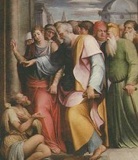
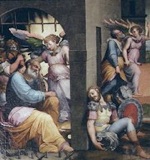
St Peter healing a lame man St Peter released from prison
Orazio Alfani was paid for four frescoes in San Pietro in 1556:
-
✴Two are attributed to him:
-
•St Peter healing a lame man; and
-
•St Peter released from prison by an angel.
-
✴Two are attributed to his associate at this time, Leonardo Cungi:
-
•St Paul surviving a shipwreck; and
-
•St Paul landing on Malta
These frescoes, which have been detached and transferred onto canvas, are now on the counter-facade.
Martyrdom of St Sebastian (1576)
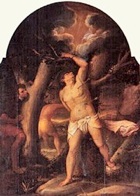
Assumption of the Virgin (16th century)
Assumption of the Virgin (16th century)
Copy (16th century) of Raphael’s Pala Baglioni
This panel on the right wall of the Oratorio di San Bernardino, which is attributed to Orazio Alfani, is the earliest known copy of the main panel of Raphael’s Deposition (1507). The original, which was still in San Francesco al Prato when this copy was made, was sold to Cardinal Scipione Borghese in 1608 and is now in the Galleria Borghese, Rome.
The copy was first recorded in the sacristy of Sant' Agostino in 1863, the date at which it was transferred to the Galleria Nazionale. It was restored in 1970 and moved to its current location.
Deposition of Christ (16th century)
This altarpiece, which was moved from San Tommaso in 1863 and is now in the Galleria Nazionale, is somewhat tentatively attributed to Orazio Alfani. It was badly restored and partly overpainted in 1935-40.
Return to Art in: Perugia.


